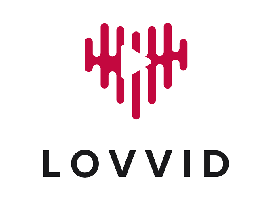Cloud Kubernetes vs. bare-metal Kubernetes
Cloud Kubernetes and bare-metal Kubernetes are two popular approaches to deploying and managing Kubernetes clusters, each with their own advantages and disadvantages. When deciding between these two options, companies need to consider various factors, including performance, cost, control and security.
One of the main advantages of Cloud Kubernetes is the fast and simple scalability of the hardware. Companies can scale resources up or down as required, providing flexibility and efficiency. The automation of scaling processes also enables smooth adaptation to changing requirements. Cloud Kubernetes also offers easier geo-redundancy, which means that data and applications can be distributed across multiple geographical locations to ensure resilience.
However, costs can vary greatly depending on usage and companies are heavily dependent on their cloud providers. Data protection concerns could also come into play, especially in areas with strict compliance requirements.
In contrast, bare-metal Kubernetes offers higher performance and full control over the hardware. Companies have direct access to physical resources, which can lead to better performance and lower costs.
Nevertheless, scaling and maintaining bare-metal infrastructures requires more effort and complexity.
In terms of performance, Cloud Kubernetes offers high network performance thanks to its optimized and scalable networks and enables rapid deployment. On the other hand, bare-metal Kubernetes offers maximum computing power and lower latency due to direct access to physical network components.
Overall, the choice between cloud Kubernetes and bare-metal Kubernetes depends on various factors, including cost, management effort, performance and security requirements. Companies need to carefully consider which option best meets their long-term requirements and ensures an effective, secure and economical infrastructure. This requires a comprehensive analysis of all relevant aspects.
KONTAKT
Mehr Informationen anfordern
Wenn Sie mehr Informationen zu diesem Thema oder zur BITS erhalten möchten, dann zögern Sie nicht mich zu kontaktieren.
Marc Schallehn, Geschäftsführer BITS GmbH
„Ich freue mich über Ihre Kontaktaufnahme.“

An excerpt of our reference projects and customers
System integration of heterogeneous systems, databases and platforms with bidirectional data synchronization
In this project, BITS implemented a high-availability solution for bidirectional data synchronization between internal and external systems.
Centralization and standardization of applications in Group companies at different locations
In this project, BITS centralized and standardized the IT infrastructure of several Group companies at different locations.
Digital transformation: Increasing the efficiency of a medium-sized company through process consulting and system optimization of an IT system landscape that has grown over the years
In this project, the process landscape of a company was transformed and digitalized.
Automation of ordering processes via the ServiceNow® IT service management module
In this project, BITS automated a customer's ordering process using ServiceNow IT Service Management.
Migration and new development of a web-based solution for empties container management
In this project, an existing MS Access-based system was replaced and completed with a more modern web-based solution with extended functionality.
Future approaches, opportunities and risks through the use of artificial intelligence (AI) in the IT workplace
As part of the TecDays in Munich and at several on-site events, BITS addressed the opportunities and risks of AI in the IT workplace.
Seamless connection of a Shopware 6 online store with the SAP Business ByDesign ERP system
In this project, BITS successfully connected the online store of a medium-sized manufacturing company to its SAP ERP system.
Reduction of CO2 emissions (IT decarbonization) at a globally operating group
As part of this project to decarbonize IT, BITS has taken over IT project management and consulting. By using innovative technologies, a contribution was made to climate protection.







































